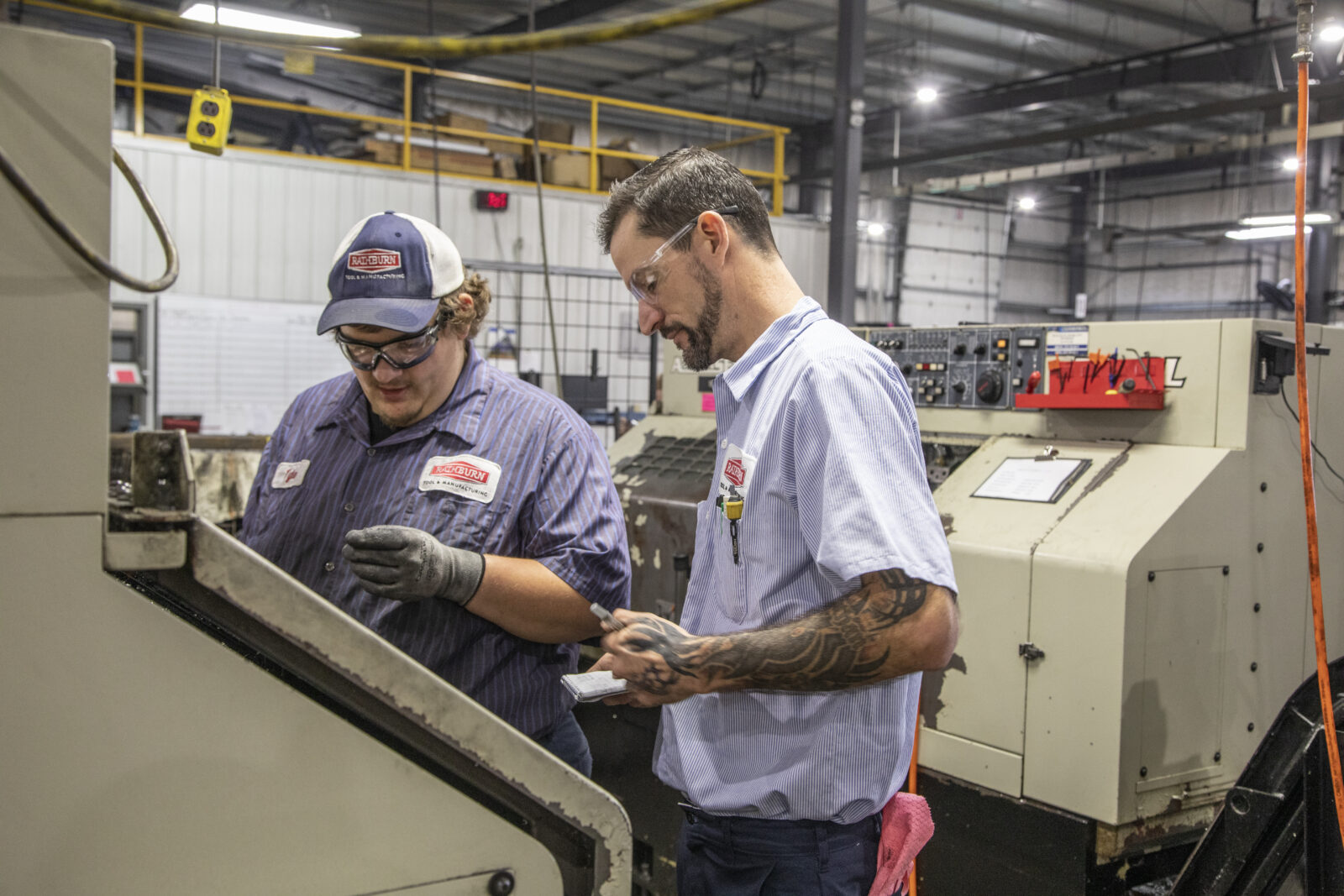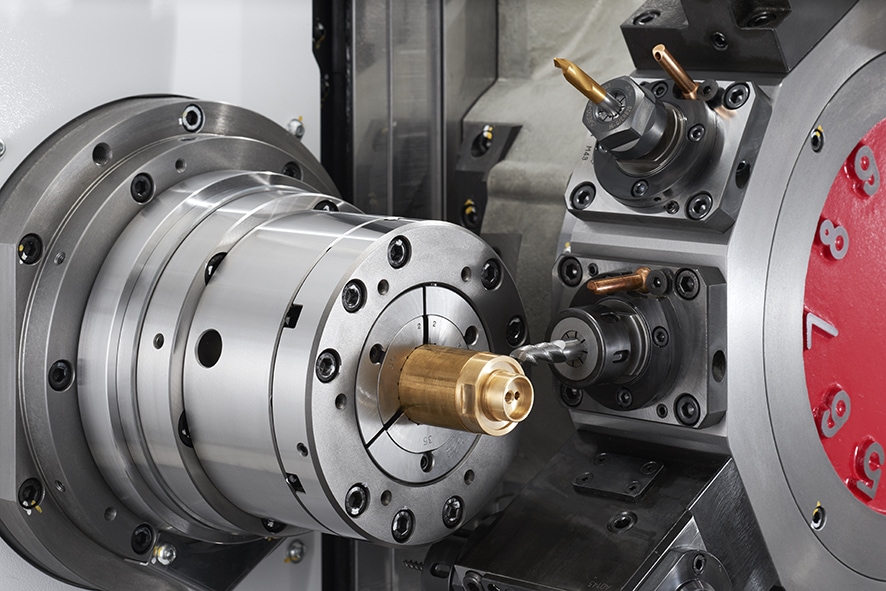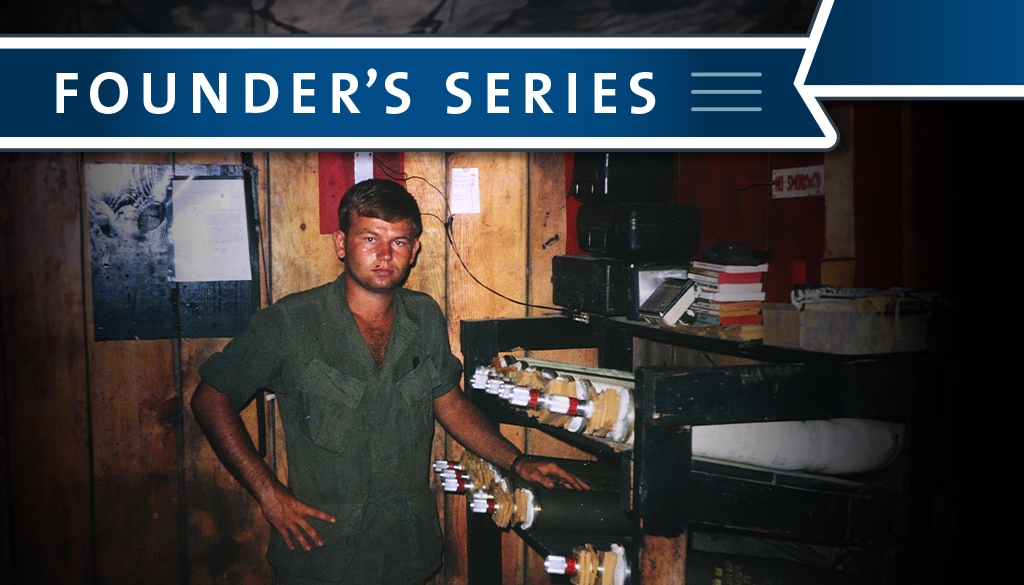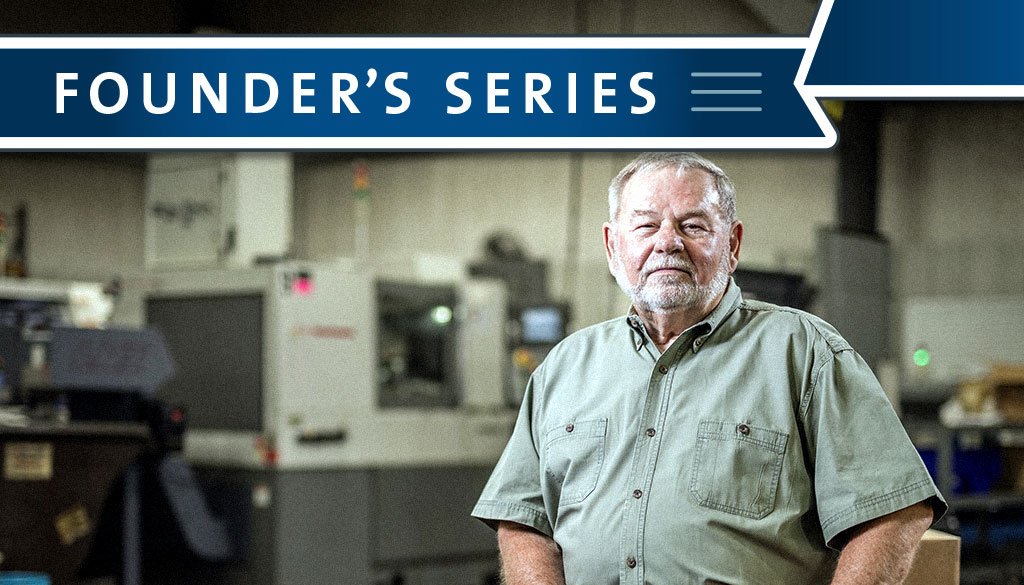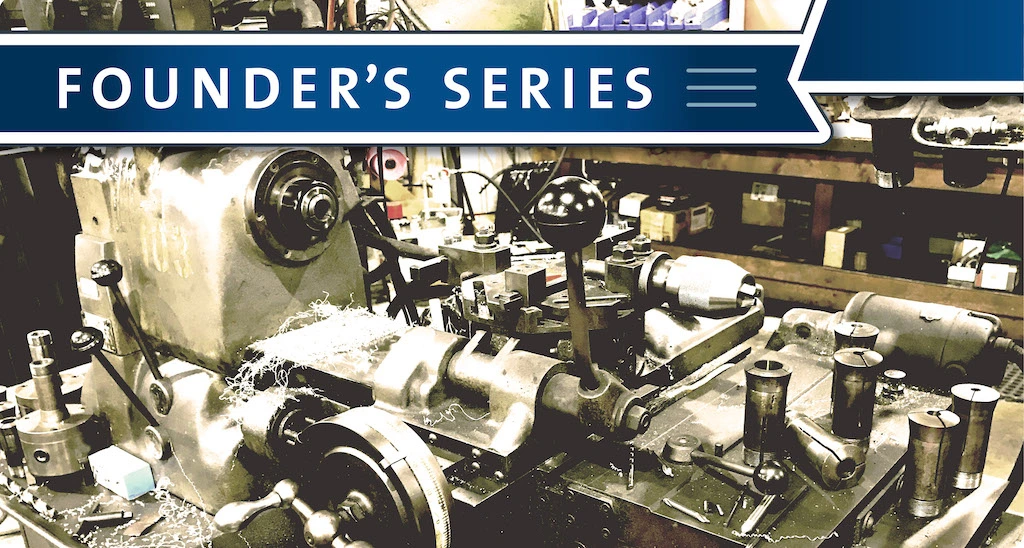CATEGORIES
SEARCH
FEATURED CONTENT
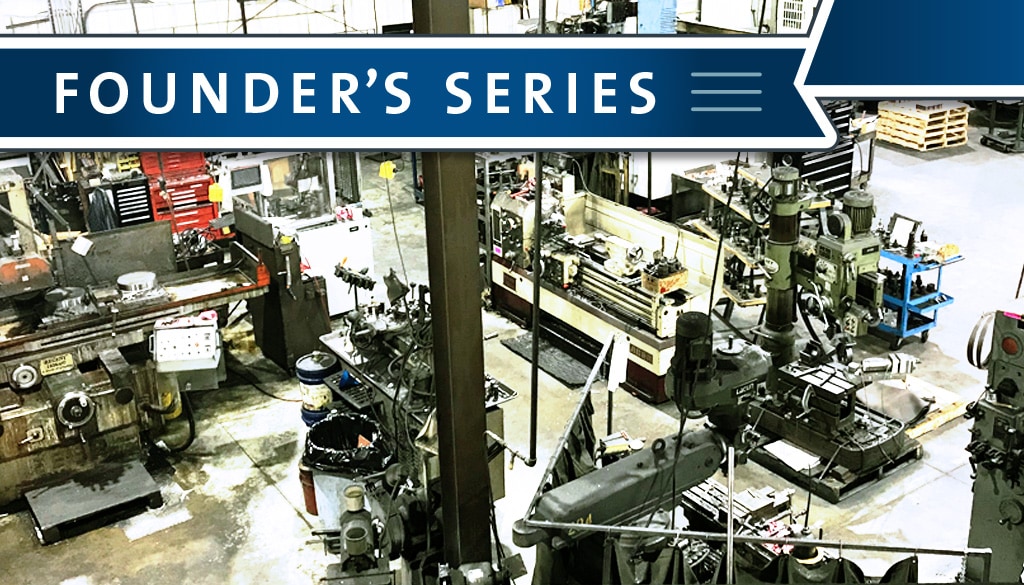
A Commitment to Technology Has Enabled Rathburn to Deliver Quality for Forty Years
03
29
2023
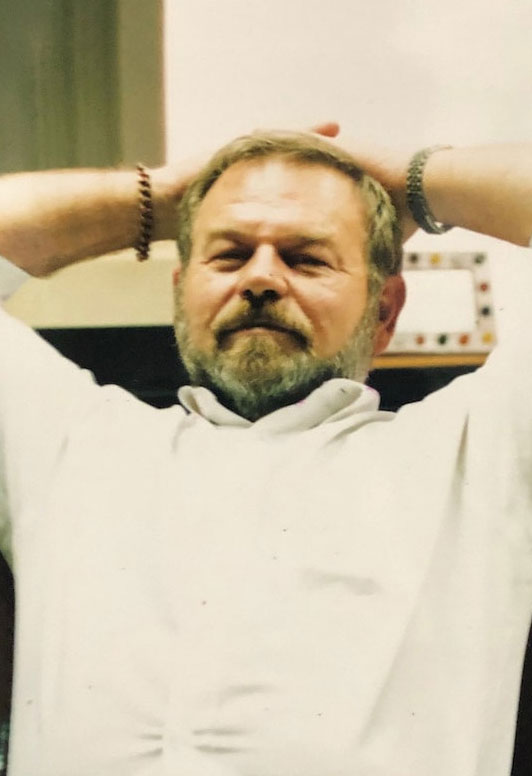
Jerry Rathburn
Founder, Rathburn Tool & Manufacturing
When any company has been around for forty years or more, it’s easy to look at the present situation and judge the past by those standards. While Rathburn Tool & Manufacturing is proud of where the company is today, it is equally proud of the journey taken and lessons learned along the way. For company founder, Jerry Rathburn, capitalizing on the continuous evolution and improvement of manufacturing equipment has been critical to the company’s long-term success.
“We were known as a sophisticated little blacksmith shop when we first started,” Jerry says while looking over the current manufacturing space. “We had two manual mills and the drive to succeed. We took on jobs other places wouldn’t and made sure the quality was outstanding so customers would come back. And they did. And they told others about what we were doing so we built a solid reputation from the start.”
While the Rathburn team was aware of equipment changes in the industry—and the fact that what they were using was already somewhat outdated—they were surprised by the rate of change happening. Says Jerry Rathburn, “Within the first year we were able to buy some newer used equipment that used one-inch-wide pieces of paper, or tape, that told the equipment what to do. We were fascinated by the fact that we could program the tooling and have the machine do the work for us.” This removed the margin for error of having craftsmen machining parts by hand. “We still had to do the engineering and computing to figure out how to make each part, but the machines would do the work after that. It was incredible to see the advancement even in our first year.”
Jerry notes that having the first programmable machines opened new opportunities—and caused his team to further commit to continuous upgrades as possible. “We were so far behind when we started,” continues Rathburn, “that we took every bit of extra money and bought equipment. Instead of buying toys or getting distracted by shiny objects, we upgraded our equipment which made our shop a more technical environment and even required different types of employees.”
“We kept becoming more sophisticated as we grew,” Rathburn notes. “In the late 1980s, they came out with the first Computer Numerically Controlled (CNC) mills. They made precision machining easier but you still had to change the tools manually.” Still, these were a significant upgrade from previous equipment that required machinists to do all the work manually and inspect parts along the way for quality and specifications. The new equipment started getting notice amongst customers.
“We when bought our first CNC mill, it machined on three dimensional axes,” Jerry adds. “We were the first shop to have a non-captive CNC machine in DeKalb County (one that wasn’t owned by a manufacturer). So we would sell time on our machine by the hour and people would place orders to get their parts machined.” Then larger companies in the surrounding areas found out that an Auburn, Indiana, machine shop had the latest equipment and the people who knew how to get things done. “In some cases, the larger manufacturers might have had 500 people or more but they didn’t have this kind of equipment or people trained to use it. So it made more sense to hire us.”
The company has maintained what author Jim Collins calls a twenty-mile approach over its forty year history by making slow and steady progress during both good and tough times, and capitalizing on good luck when it happened. By Jerry’s recollection on making a significant purchase, “I think we paid about $55,000 for the machine, $10,000 for a computer, and another $10,000 to train the guy to run it. We didn’t have all of the money to pay for it at the time so we borrowed to cover the gap.”
He continued, “I figured, if finances went south, we could sell the $55,000 machine for as much as $35,000 the next day if we had to, so it seemed like a good investment. We were still a small company so that was a major investment and we couldn’t afford to not get our money back.” But the commitment paid off quickly. The company gained enough business to pay for that machine and purchase another within nine months.
“From that time through today, we have always reinvested back into our equipment and the people who run that equipment,” Jerry finishes. “That’s made all the difference in how we’ve been able to service our customers and have technology that other shops didn’t have. You have to recognize that technology is always moving fast. That means the products our customers need will become more complex and harder to produce using the old machines. By committing to staying ahead of the curve, we have been able to provide the very best precision parts made by great people right here at Rathburn Tool & Manufacturing.”
Follow this series to learn more about Rathburn’s origin story, lessons in leadership, evolutions in equipment, and the importance of treating people well.
RELATED POSTS

A Commitment to Technology Has Enabled Rathburn to Deliver Quality for Forty Years
03
29
2023

Jerry Rathburn
Founder, Rathburn Tool & Manufacturing
When any company has been around for forty years or more, it’s easy to look at the present situation and judge the past by those standards. While Rathburn Tool & Manufacturing is proud of where the company is today, it is equally proud of the journey taken and lessons learned along the way. For company founder, Jerry Rathburn, capitalizing on the continuous evolution and improvement of manufacturing equipment has been critical to the company’s long-term success.
“We were known as a sophisticated little blacksmith shop when we first started,” Jerry says while looking over the current manufacturing space. “We had two manual mills and the drive to succeed. We took on jobs other places wouldn’t and made sure the quality was outstanding so customers would come back. And they did. And they told others about what we were doing so we built a solid reputation from the start.”
While the Rathburn team was aware of equipment changes in the industry—and the fact that what they were using was already somewhat outdated—they were surprised by the rate of change happening. Says Jerry Rathburn, “Within the first year we were able to buy some newer used equipment that used one-inch-wide pieces of paper, or tape, that told the equipment what to do. We were fascinated by the fact that we could program the tooling and have the machine do the work for us.” This removed the margin for error of having craftsmen machining parts by hand. “We still had to do the engineering and computing to figure out how to make each part, but the machines would do the work after that. It was incredible to see the advancement even in our first year.”
Jerry notes that having the first programmable machines opened new opportunities—and caused his team to further commit to continuous upgrades as possible. “We were so far behind when we started,” continues Rathburn, “that we took every bit of extra money and bought equipment. Instead of buying toys or getting distracted by shiny objects, we upgraded our equipment which made our shop a more technical environment and even required different types of employees.”
“We kept becoming more sophisticated as we grew,” Rathburn notes. “In the late 1980s, they came out with the first Computer Numerically Controlled (CNC) mills. They made precision machining easier but you still had to change the tools manually.” Still, these were a significant upgrade from previous equipment that required machinists to do all the work manually and inspect parts along the way for quality and specifications. The new equipment started getting notice amongst customers.
“We when bought our first CNC mill, it machined on three dimensional axes,” Jerry adds. “We were the first shop to have a non-captive CNC machine in DeKalb County (one that wasn’t owned by a manufacturer). So we would sell time on our machine by the hour and people would place orders to get their parts machined.” Then larger companies in the surrounding areas found out that an Auburn, Indiana, machine shop had the latest equipment and the people who knew how to get things done. “In some cases, the larger manufacturers might have had 500 people or more but they didn’t have this kind of equipment or people trained to use it. So it made more sense to hire us.”
The company has maintained what author Jim Collins calls a twenty-mile approach over its forty year history by making slow and steady progress during both good and tough times, and capitalizing on good luck when it happened. By Jerry’s recollection on making a significant purchase, “I think we paid about $55,000 for the machine, $10,000 for a computer, and another $10,000 to train the guy to run it. We didn’t have all of the money to pay for it at the time so we borrowed to cover the gap.”
He continued, “I figured, if finances went south, we could sell the $55,000 machine for as much as $35,000 the next day if we had to, so it seemed like a good investment. We were still a small company so that was a major investment and we couldn’t afford to not get our money back.” But the commitment paid off quickly. The company gained enough business to pay for that machine and purchase another within nine months.
“From that time through today, we have always reinvested back into our equipment and the people who run that equipment,” Jerry finishes. “That’s made all the difference in how we’ve been able to service our customers and have technology that other shops didn’t have. You have to recognize that technology is always moving fast. That means the products our customers need will become more complex and harder to produce using the old machines. By committing to staying ahead of the curve, we have been able to provide the very best precision parts made by great people right here at Rathburn Tool & Manufacturing.”
Follow this series to learn more about Rathburn’s origin story, lessons in leadership, evolutions in equipment, and the importance of treating people well.
